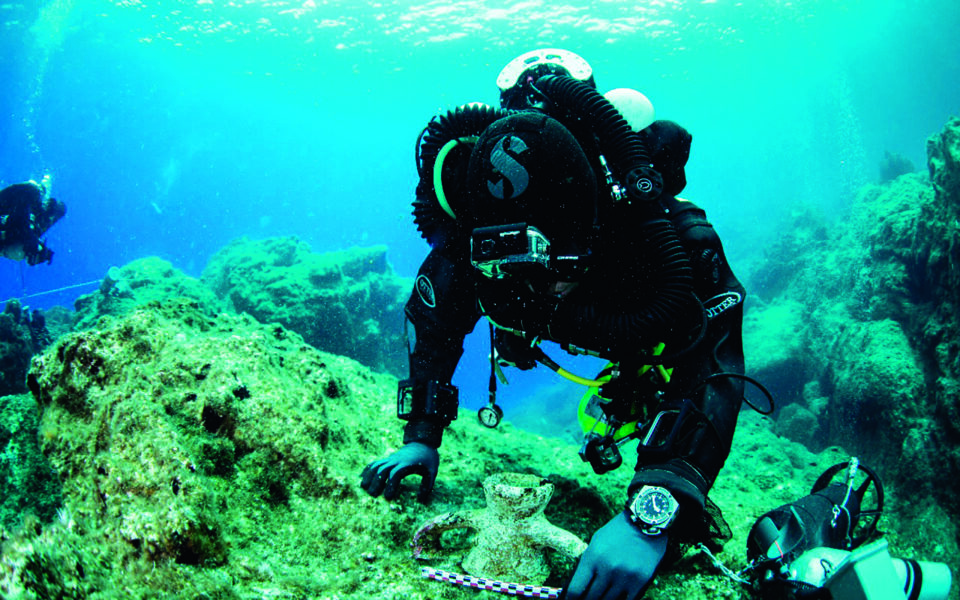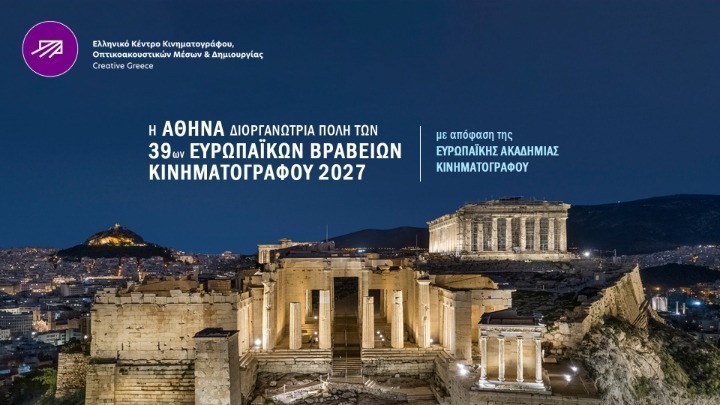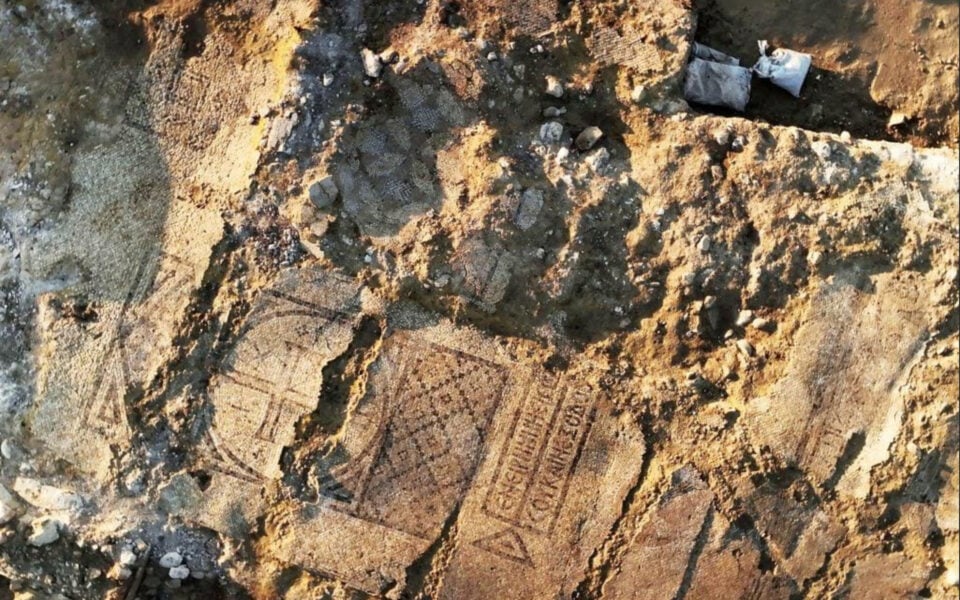Antikythera seabed yielding more gifts


Archaeologists excited by discovery of another wreck near famed sunken ship of antiquity
Poseidon cooperated this time around. The ancient Greek god blessed the archaeologists, divers and scientists in their latest mission to the Antikythera wreck with smooth seas. Because since 2014, when research resumed at the site of antiquity’s most famous sunken ship, rough seas whipped up by gale-force winds have always stood as an obstacle. Thanks to this year’s meteorological “miracle,” the team was able to work at the site without interruption from May 17 to June 20, as part of the 2021-2025 research program.
Both Dr Angeliki Simosi – the honorary director for antiquities at the Greek Ministry of Culture and co-director of the research that is being conducted by the Swiss Archaeological School, under the supervision of the Ephorate of Underwater Antiquities – and the school’s Dr Lorenz Baumer, from the University of Geneva, have expressed their excitement with the progress made at the site.
Chief among the new breakthroughs made was the ability to precisely record the location of the remains of the wreck that was carrying the Antikythera mechanism and the famous statues. This will allow the experts to calculate the ship’s size more accurately, but also the exact location of the cargo hold carrying these precious artifacts.
Sure, the sponge divers from Symi who first spotted remains of the wreck retrieved statues, and French oceanographer Jacques Cousteau also collected finds from the site in 1976, but they were retrieving objects from what was, effectively, a terraced seafloor, without knowing where the actual Roman-era wreck lay.
The latest studies will give us more insight into why the ship went down, where it was headed and, possibly, information on its crew and passengers, of whom we have skeletal remains, including teeth.
This year’s discoveries yielded even more exciting information, however. While archaeologists had identified a deposit of pottery of the same kind as that found in the ship some 200 meters from the wreck, they could not tell whether it was from a second ship or had been swept there by currents. This year’s expedition confirmed the existence of another vessel, which backs the theory that the first wreck was one of a pair of ships plying a specific route.
Apart from the weather, technology was also important to the success of this year’s expedition, which was designed and updated on the basis of information from the database and the geographic information system (GIS) created in previous years. Remotely operated vehicles from Hublot Xplorations and the underwater missions unit of the Hellenic Coast Guard were used for real-time monitoring and coordination of all underwater operations and for the creation of digital three-dimensional models of selected areas. Three-dimensional models of the recovered objects were created thanks to a special scanner, developed specifically for the research program by watchmaker Hublot.
Samples taken from the seabed were sent to a geoarchaeological lab set up on the island for immediate processing, as this is only way to find out what happened to the ship – or the convoy of ships – in 60-70 BC, or thereabouts, and why it ended up on the seabed off the coast of what was a notorious pirate’s den instead of reaching its final destination.
This year’s finds also include 18 fragments of statues, as well as pottery and wood from the vessel.
As Professor Baumer had told Kathimerini after last year’s expedition, “the smallest fragment, a nail for example, can give us important information. It can help us understand how the ship sank, where it was coming from, where it was going and what else it was carrying. I assure you that these humble fragments are as priceless as a statue.”
These words by the Swiss professor of archaeology encompass the entire spirit of the endeavour, which has been given a fresh boost from this year’s discovery.


Source: ekathimerini.com




